Vitalux: A Review of Treatment for Age-Related Macular Degeneration
This article is all about the use of Vitalux for Age-Related Macular Degeneration (AMD). Vitalux is a common product used for anyone diagnosed with with AMD. Do these supplements really help? What does AREDS stand for? Read on to find out more about:
- What Is Age-Related Macular Degeneration?
- What Causes Age-Related Macular Degeneration?
- What Are Symptoms of Age-Related Macular Degeneration?
- What Clinical Trials Have been Conducted to Study Age-Related Macular Degeneration? (and What Is AREDS?)
- What Does the Evidence Say?
- Is there a Treatment for Age-Related Macular Degeneration?
- Who Should Use the AREDS/AREDS2 Supplements?
- What Ingredients are in Vitalux Products? (Which One Should I Buy?)
- Are There Any Side Effects?
- Are There Natural Ways to Prevent Age-Related Macular Degeneration?
- Bottom Line
- Where Can I Buy Vitalux Products In Canada?
What is Age-Related Macular Degeneration?
Age-related macular degeneration (AMD) is a common eye disease in adults over 50, affecting over million people in Canada and is the second leading cause for blindness in adults1. It is a disease that worsens over time affecting central vision, which can lead to an inability to read, drive or recognize the faces of family members2. There are three stages of AMD: early, intermediate and advanced and two types of AMD – wet and dry.
- Dry AMD – is generally more common and has a slower progression3.
- Wet AMD – happens quickly and can result in blindness if not treated quickly3! (Dry AMD can progress to wet AMD)
What Causes Age-Related Macular Degeneration?
AMD results in damage to the macula, a small spot at the back of the eye behind the retina. The macula is responsible for central vision, color vision and fine details. The cause of AMD is not known, but there are some possible risk factors4:
- Smoking
- Tobacco use
- UV light exposure
- Hypertension
- Diabetes
- Cardiovascular disease
What are Symptoms of Age-Related Macular Degeneration5?
- Blurred central vision
As an example, this is what someone with normal vision would see:

This what it might look like if you have blurred central vision:

- Growing central blind spot or other blank spots in your vision
- Sensitivity to light
- Difficulty recognizing faces, reading or focusing on details
- Straight lines appearing wavy, distorted or crooked
- Loss of colour perception
What Clinical Trials have been conducted to study Age-Related Macular Degeneration? (And What is AREDS?)
To determine ways to reduce the progression of AMD and vision loss, the American National Eye Institute sponsored multiple drug studies to evaluate the role of high doses of vitamins and minerals in helping AMD. You have most likely come across many bottles of Vitalux AREDS in the pharmacy aisles and you may have wondered what AREDS was all about. AREDS stands for Age-Related Eye Disease Study. In 2001, researchers with the Age-Related Eye Disease Study (AREDS1) reported that a formulation containing:
- vitamin C (500 mg)
- vitamin E (400 IU)
- beta-carotene (15 mg)
- zinc (80 mg)
- copper (2 mg)
From 2008 to 2013, a second study (AREDS2)7 focused on figuring out if the AREDS formulation could be further improved. AREDS2 added lutein, zeaxanthin and omega-3 fatty acids to the formulation, removed beta-carotene and lowered the dose of zinc.
Summary of Changes to the AREDS2 Clinical Trial3,7
- Removal of Beta-carotene (replaced by lutein and zeaxanthin)
Beta-carotene was found to increase lung cancer risk among smokers. Lutein and zeaxanthin are thought to be safer and possibly more effective alternatives in the same family of nutrients as beta-carotene. As a result, the beta-carotene was removed in the AREDS2-trial.
- Addition of 10 mg of lutein and 2 mg of zeaxanthin 2 mg
After observing people who took dietary lutein and zeaxanthin over time, it was thought lutein and zeaxanthin could reduce the risk of developing AMD due to their antioxidant properties. There were no harmful effects identified with these ingredients, generally found in diet and give color to the eye.
- Addition of 350 mg of Docosahexaenoic acid (DHA), and 650 mg of Eicosapentaenoic acid (EPA) (which are types of omega-3 fatty acids).
Higher dietary intake of EPA and DHA was associated with lower chances of AMD progression and is generally thought to be safe.
- Lower dose of Zinc to 25 mg
The original AREDS formulation contained 80 mg of Zinc and was an essential component. However, nutritional experts recommended a lower dose of zinc based on the idea that the original AREDS formulation contained more zinc than can be absorbed and also increased risk of anemia. As a result, patients in the AREDS2 trial either took 25 mg of zinc or none at all.
|
Ingredients in AREDS1 Trial |
Ingredients in AREDS2 Trial |
|
|
Beta-carotene |
25,000 IU (15 mg) |
None |
|
Vitamin C |
500mg |
500mg |
|
Vitamin E |
400 IU |
400 IU |
|
Zinc |
80mg |
25 mg |
|
Copper |
2mg |
2mg |
|
Lutein |
None |
10 mg |
|
Zeaxanthin |
None |
2 mg |
|
Omega-3 fatty acids |
None |
350 mg DHA and 650 mg EPA |
What does the evidence say?
The additional ingredients in the second study3,7 did not show any additional benefit (so either formula will work).
Here’s a simple breakdown of the results from the AREDS2 study:
| Removal of Beta-Carotene and repla-cement with lutein and zeaxanthin | Did not reduce the rates of worsening vision to advanced AMD |
| Addition of DHA and EPA | Did not reduce the rates of worsening vision to advanced AMD |
| Lower dose of Zinc to 25 mg | Did not reduce the rates of worsening vision to advanced AMD |
Is There a Treatment for Age-Related Macular Degeneration?
Short answer: there is unfortunately no treatment for AMD.
Who Should Use AREDS/AREDS2 Supplements?
You should use these supplements if you have been diagnosed with intermediate or advanced AMD and have been recommended to use these supplements by a health care professional. There is currently no evidence that these supplements reduce the onset of AMD if you do not have AMD.
What Ingredients are in Vitalux Products? (Which One Should I Buy?)
Choosing a product can often be confusing because there are 6 different Vitalux products and none of them really match the original formulas used in the AREDS1 trial or AREDS2 trial. But if you are choosing a Vitalux product for macular degeneration, there are some differences between the formulas to be noted.
Vitalux Advanced
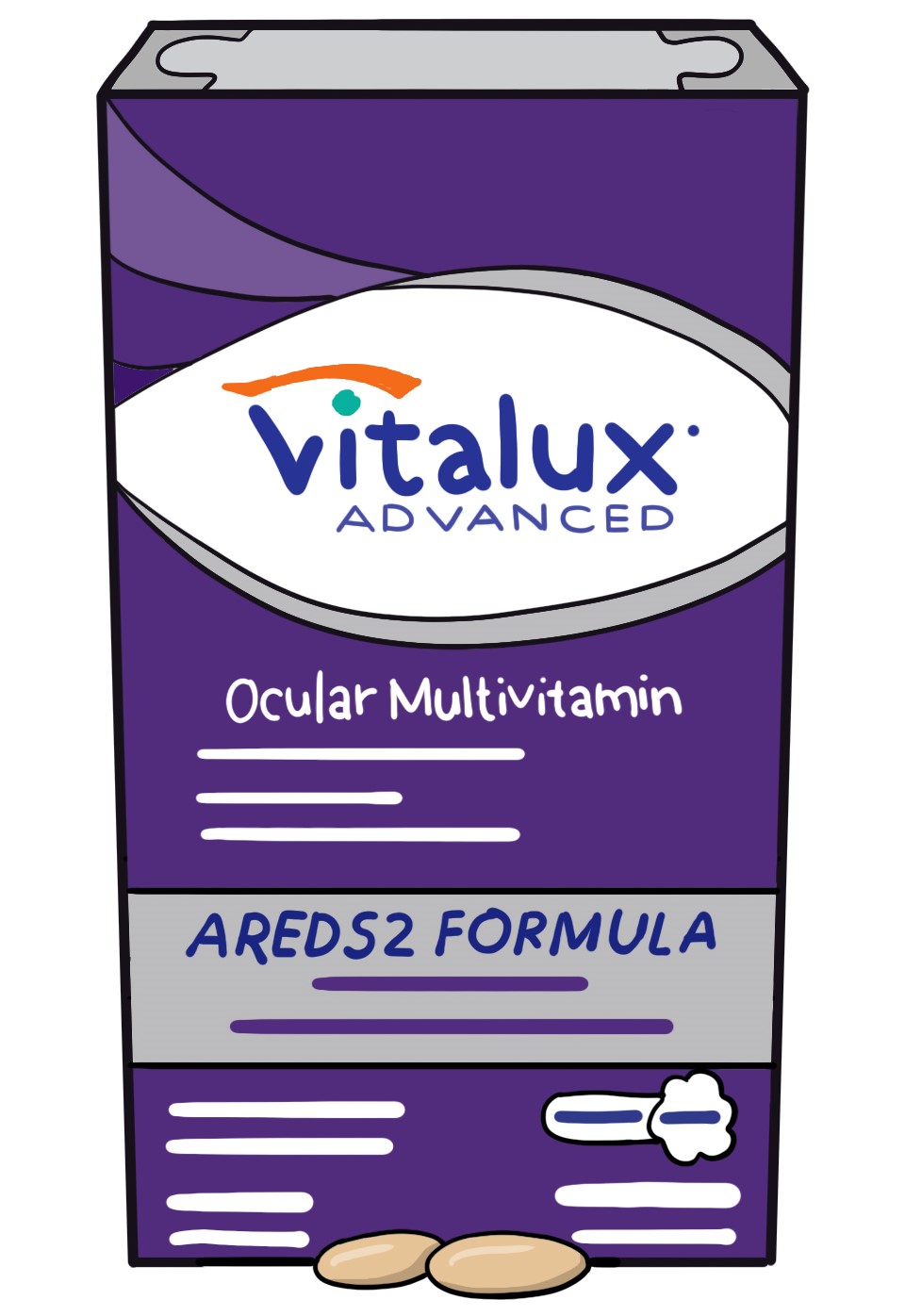
Directions: Take 2 caplets/day
Medicinal Ingredients Based on 2 caplets/day:
- Beta-Carotene: None
- Vitamin C: 500mg
- Vitamin E: 400 IU
- Zinc: 80 mg
- Copper: 2 mg
- Lutein: 10 mg
- Zeaxanthin: 2 mg
Other Ingredients: Calcium phosphate dibasic, microcrystalline cellulose, Hypromellose, vegetable stearic acid, silicon dioxide, titanium dioxide, hydroxypropyl cellulose, caramel colour, ethylvanillin
Notes: This formula is a hybrid between the AREDS1 and AREDS2 formula. It has the same level of zinc found in the AREDS1 formula but doesn’t have the beta-carotene. It also doesn’t have the Omega-3s from the AREDS2 trial.
Vitalux Advanced Chewable
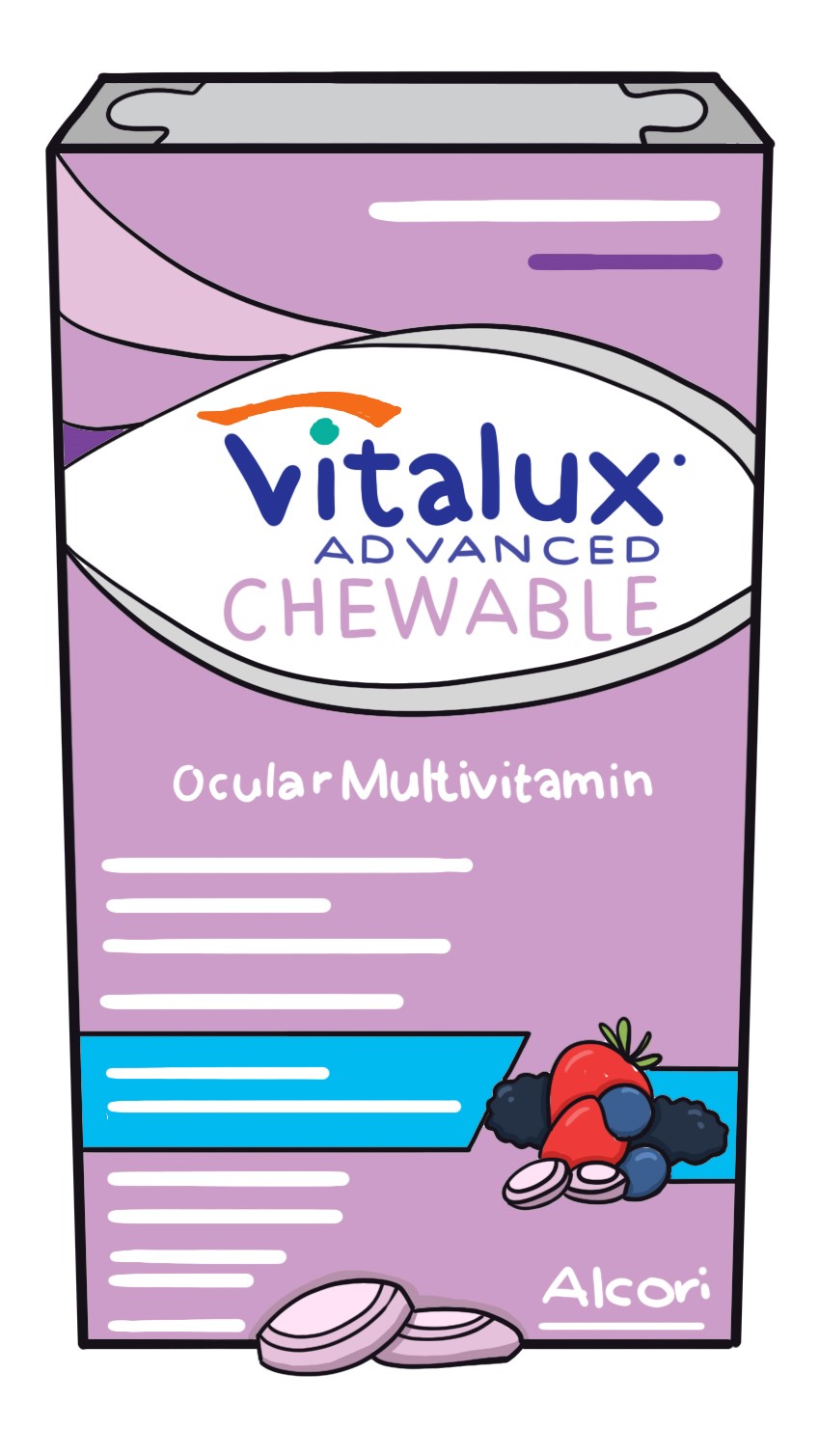
Directions: Chew 2 tablets/day
Medicinal Ingredients Based on 2 tablets/day:
- Beta-carotene: None
- Vitamin C: 500mg
- Vitamin E: 400 IU
- Zinc: 25 mg
- Copper: 2 mg
- Lutein: 10 mg
- Zeaxanthin: 2 mg
Other Ingredients: Dextrose, d-mannitol, bilberry fruit extract, natural flavour enhancer, vegetable stearic acid, natural flavours (strawberry, raspberry, blueberry), citric acid, calcium silicate, silicon dioxide, sucralose, vegetable juice, gum acacia, maltodextrin
Notes: These are chewable tablets, which makes it easier if you have difficulties swallowing. This formula is closer from the AREDS2 formula but without the Omega-3s.
Vitalux Advanced + Multivitamin Chewable
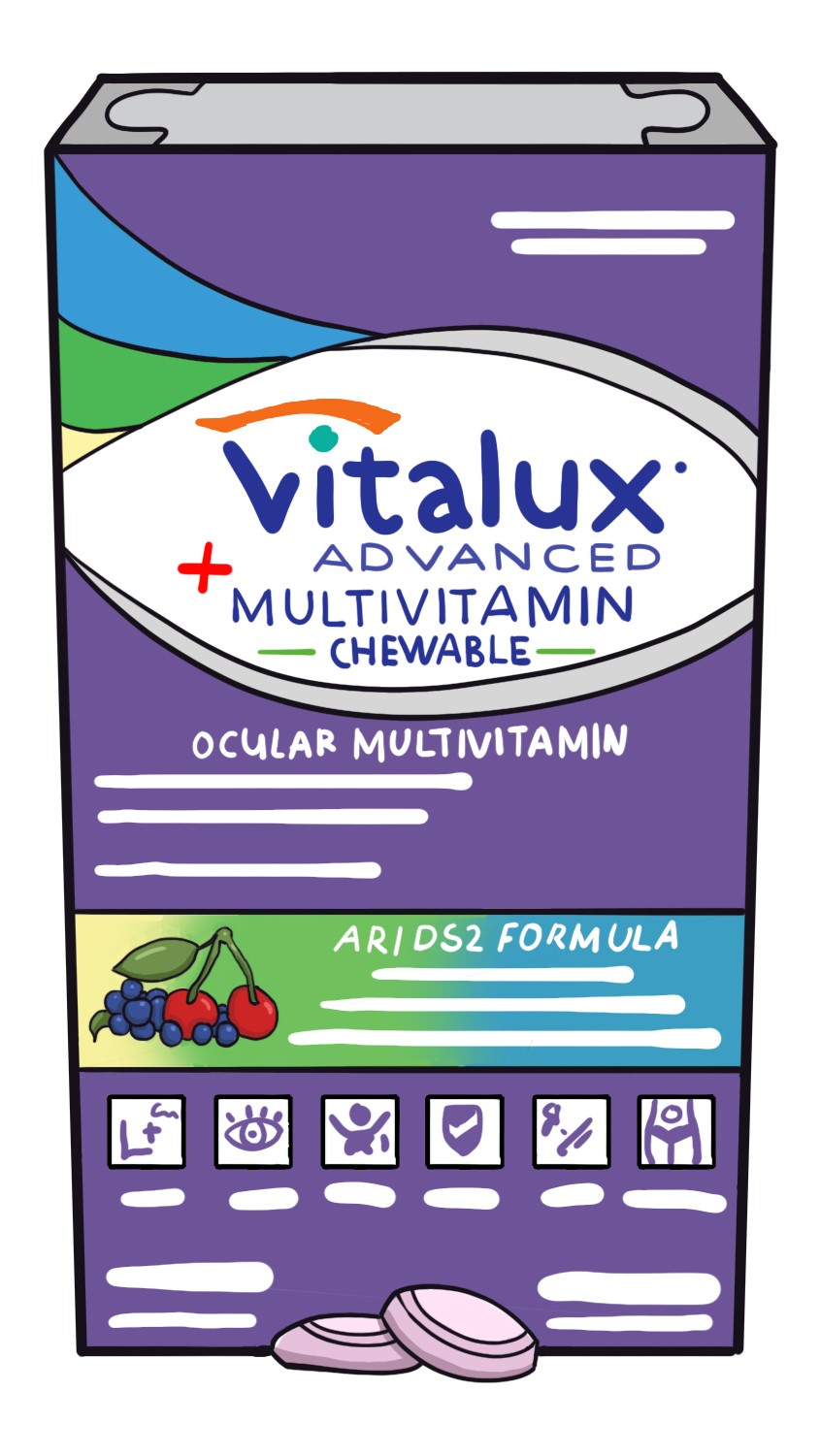
Directions: Chew 2 tablets/day
Medicinal Ingredients Based on 2 tablets/day:
- Beta-carotene: None
- Vitamin C: 500mg
- Vitamin E: 400 IU
- Zinc: 25 mg
- Copper: 1 mg
- Lutein: 10 mg
- Zeaxanthin: 2 mg
Others: Biotin, Calcium, Chromium, Folate, Iodine, Iron, Lycopene, Magnesium, Manganese, Molybdenum, Phosphorus, Selenium, Vitamin B2, Vitamin B2, Vitamin B3, Vitamin B5, Vitamin B12, Vitamin C, Vitamin D, Vitamin E, Vitamin K1
Other Ingredients: Dextrose, vegetable stearic acid, natural flavour enhancer, natural flavours (blueberry, cherry), vegetable juice, gum acacia, maltodextrin, calcium carbonate, citric acid, sodium carbonate, silicon dioxide, calcium silicate, sucralose
Notes: Chewable tablets that is closer to the AREDS2 formula but have a bit less copper and does not have the Omega-3s. It also is a multivitamin, so if you take both a multivitamin plus your eye vitamin (you could opt for this combination).
Vitalux Advanced + Omega-3
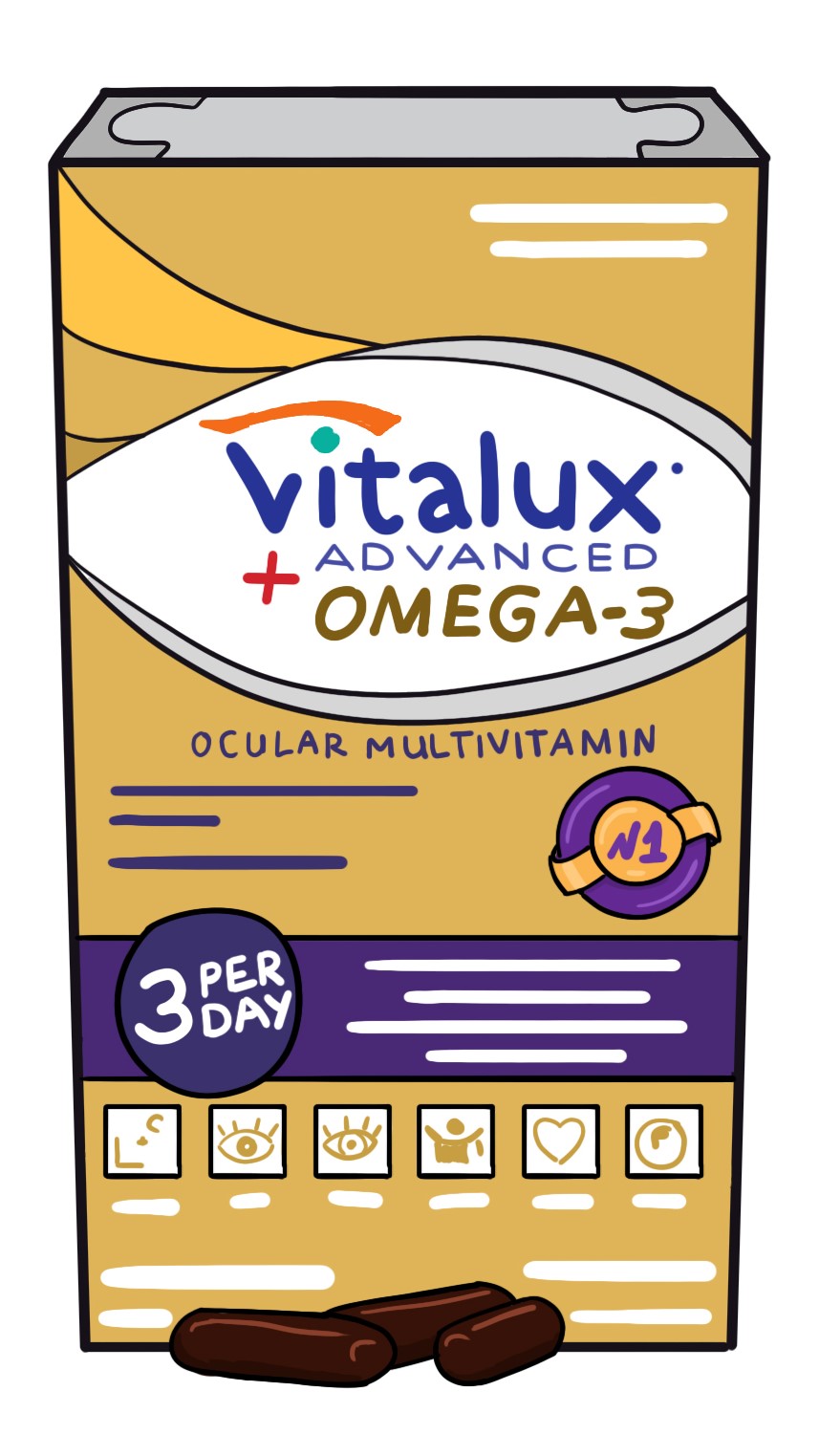
Directions: Take 1 capsule three times daily
Medicinal Ingredients Based on 1 capsule three times/day:
- Beta-carotene: None
- Vitamin C: 500mg
- Vitamin E: 400 IU
- Zinc: 25 mg
- Copper: 2 mg
- Lutein: 10 mg
- Zeaxanthin: 2 mg
- DHA: 240 mg
- EPA: 360 mg
Other Ingredients: Yellow wax, soybean oil, soy lecithin, gelatin, glycerin, iron oxide red, iron oxide black, titanium dioxide
Notes: This product is closest to the AREDS2 and trial but has lower does of the omega-3s (DHA and EPA). This is the only Vitalux product with omega-3.
Vitalux-S
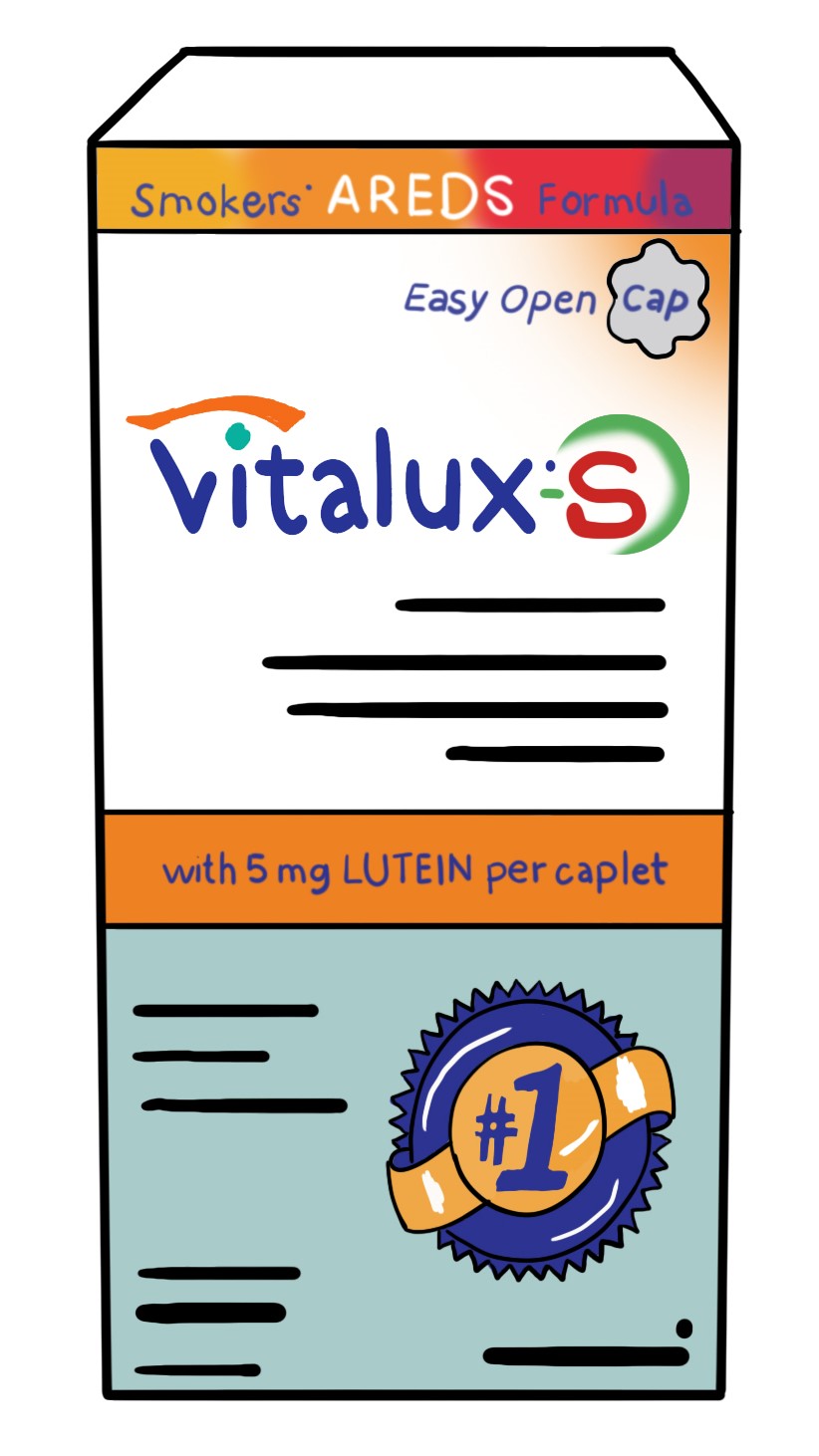
Directions: Take 2 caplets/day
Medicinal Ingredients Based on 2 caplets/day:
- Beta-carotene: None
- Vitamin C: 500mg
- Vitamin E: 400 IU
- Zinc: 80 mg
- Copper: 2 mg
- Lutein: 10 mg
- Zeaxanthin: 500 mcg
Other Ingredients: Microcrystalline cellulose, Hypromellose, vegetable stearic acid, vegetable magnesium stearate, calcium silicate, water, titanium dioxide, hydroxypropyl cellulose, polyethylene glycol, caramel colour, polysorbate 80, carnauba wax, ethyl vanillin, diacetylated monoglycerides, xanthan gum
Notes: This formula is a hybrid between the AREDS1 and AREDS2 formula. It has the same level of zinc found in the AREDS1 formula but doesn’t have the beta-carotene. It also doesn’t have the Omega-3s from the AREDS2 trial. It’s almost exactly like the Vitalux Advanced but has a lower amount of zeaxanthin.
Vitalux Healthy Eyes
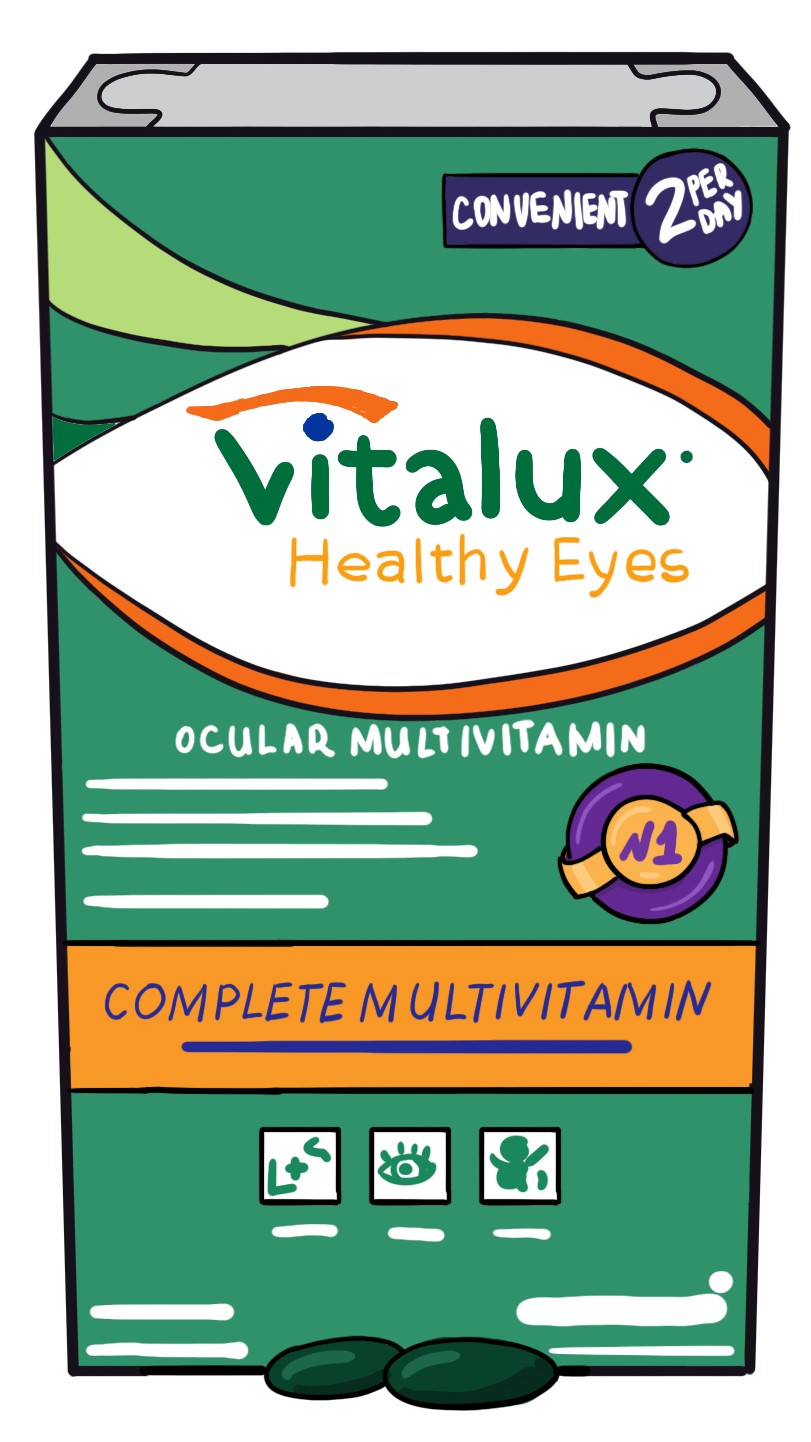
Directions: Take 2 tablets/day
Medicinal Ingredients Based on 2 tablets/day:
- Beta-carotene: None
- Vitamin C: 300mg
- Vitamin E: 100 IU
- Zinc: 40 mg
- Copper: 2 mg
- Lutein: 10 mg
- Zeaxanthin: 2 mg
Others: Biotin, Calcium, Chromium, Folate, Iodine, Lycopene, Magnesium, Manganese, Molybdenum, Phosphorus, Selenium, Silicon, Vitamin B1, Vitamin B2, Vitamin B2, Vitamin B3, Vitamin B5, Vitamin B 6, Vitamin B12, Vitamin C, Vitamin D, Vitamin E
Other Ingredients: Calcium Silicate, Carnauba wax, cellulose, croscamellose sodium, ethyl vanillin, hydroxypropyl cellulose, Hypromellose, sodium copper, chlorophyllin, titanium dioxide, vegetable magnesium stearate, vegetable stearic acid
Notes: This is marketed as a multivitamin to help prevent AMD in someone who might be ‘high-risk’. This has lower amounts to what is found in AREDS1 and AREDS2 trial. Even at the amounts in the trial (higher doses), there was no evidence it prevented AMD if there was no diagnosis.
Are There Any Side Effects?
Overall, these products have been found to be safe and tolerable; however, there are a few things general things to watch for:
- Beta-Carotene: If you are a smoker, be careful of beta-carotene because it has been associated with increased risk of lung cancer; ; however, none of the current Vitalux products contain beta-carotene (so you could use any of these products)3 .
- High doses of zinc (and possibly other anti-oxidants) : could lead to increase risk of anemia and genito-urinary problems such as UTI or stress incontinence3.
Speak to a health care professional if you suffer from any health conditions or on medications before starting this product to make sure there are no interactions or risk of causing harm.
Are There Ways to Prevent Age-Related Macular Degeneration?
There is no strong research supporting prevention of AMD4 (if you are not formally diagnosed with it); however, it is always recommended to maintain healthy eyes and vision. This includes:
- Having your eyes checked regularly by an eye-care professional
- Avoid smoking and using tobacco products
- Protecting your eyes from sunlight
- Keeping alcohol consumption moderate
- Increasing your intake of fresh fruit and green leafy which contain lutein and zeaxanthin (such as kale, spinach, swiss chard and romaine lettuce)
- Eating foods high with the omega-3s DHA and EPA
- Ensuring your blood pressure is controlled
- Ensuring your blood sugar levels are controlled
Bottom Line
If you are diagnosed with intermediate or advanced AMD, AREDS supplements may help slow down the progression of vision loss or worsening of the disease. Any of the Vitalux products will be equally effective except for Vitalux Healthy Eyes which has lower doses of all anti-oxidants and is targeted to people looking to use a multivitamin to help with prevention. There is currently no evidence for using these supplements for prevention if you do not have AMD. If you are a smoker, make sure to avoid any products containing Beta-Carotene. A discussion with your health care professional is necessary especially if you have advanced AMD.
Where Can I Buy Vitalux Products in Canada?
In Canada, this product can be bought in-person from any pharmacy or drug store or online from:
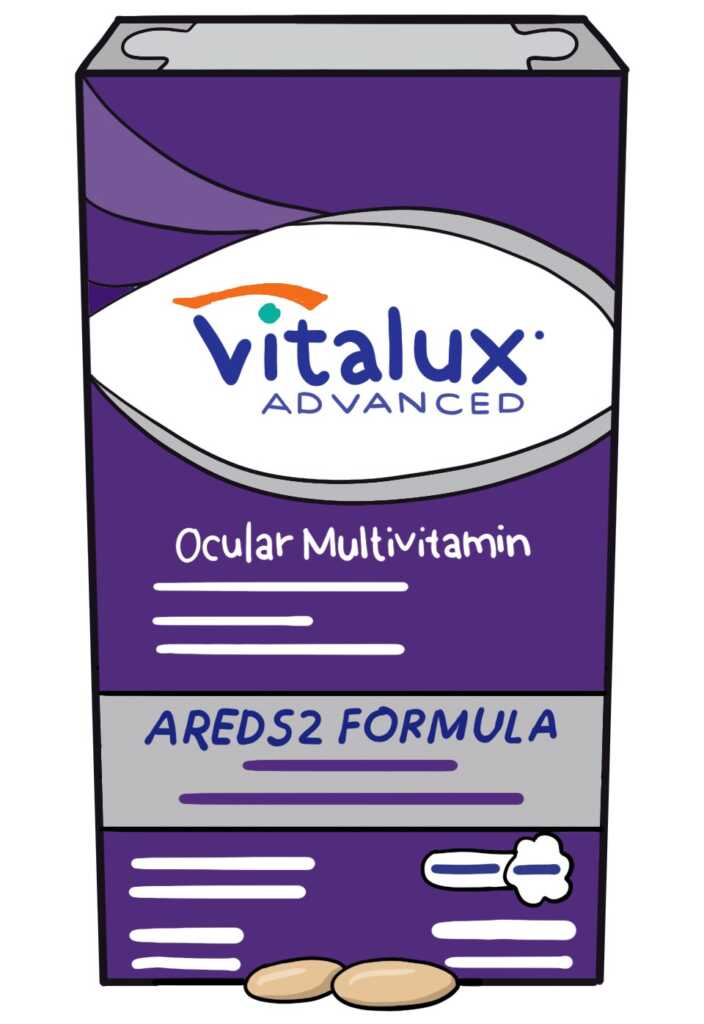
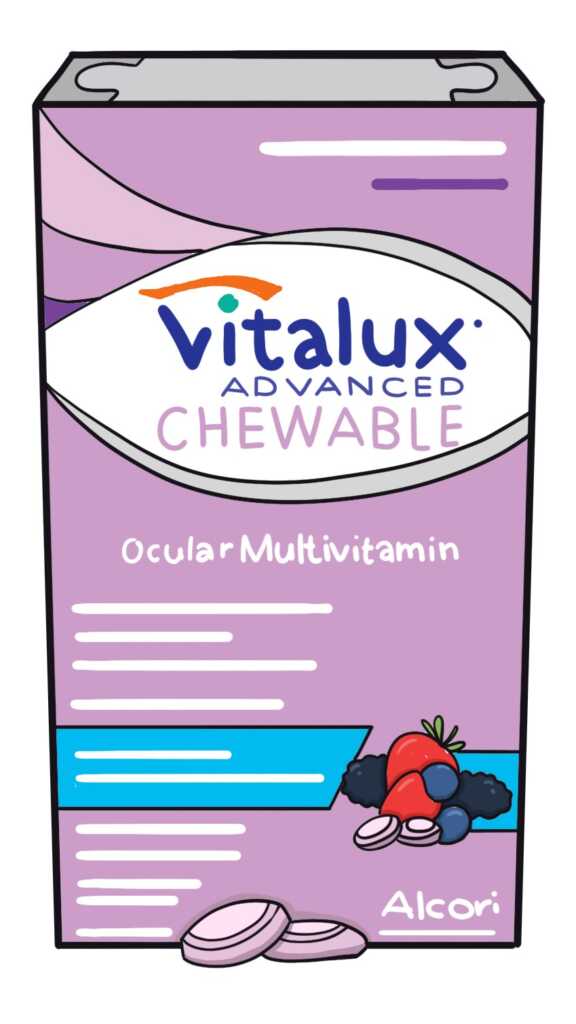
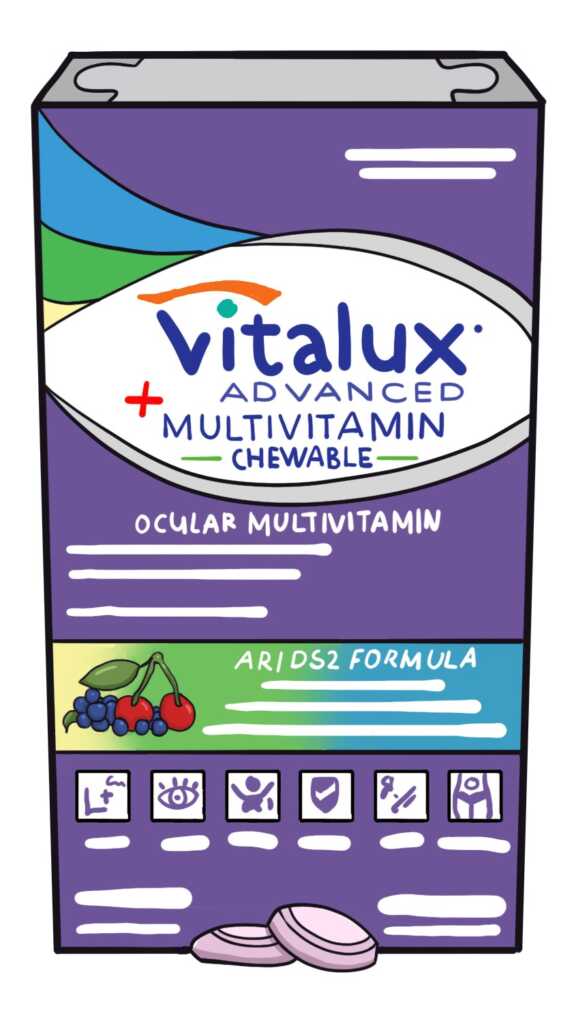
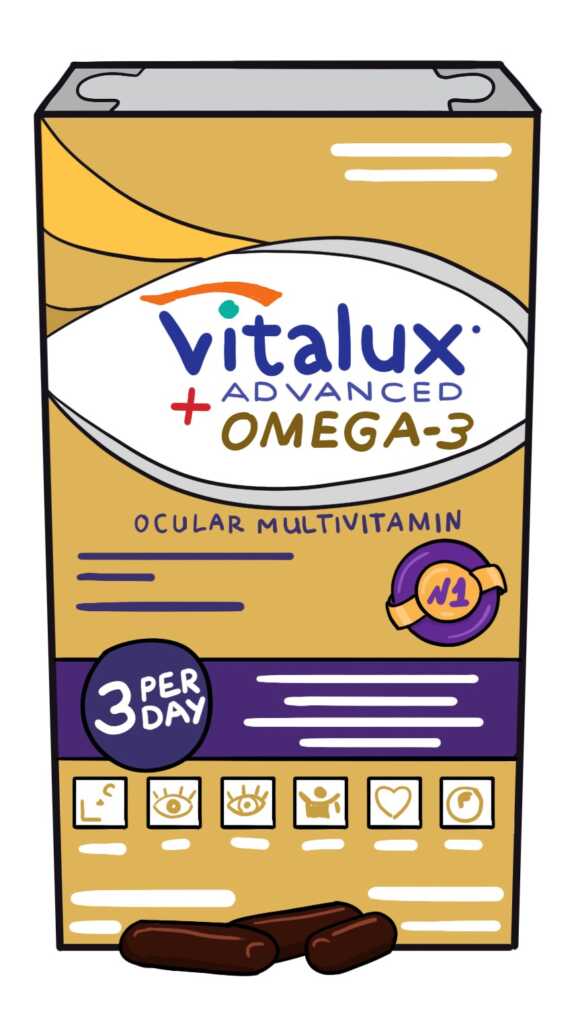
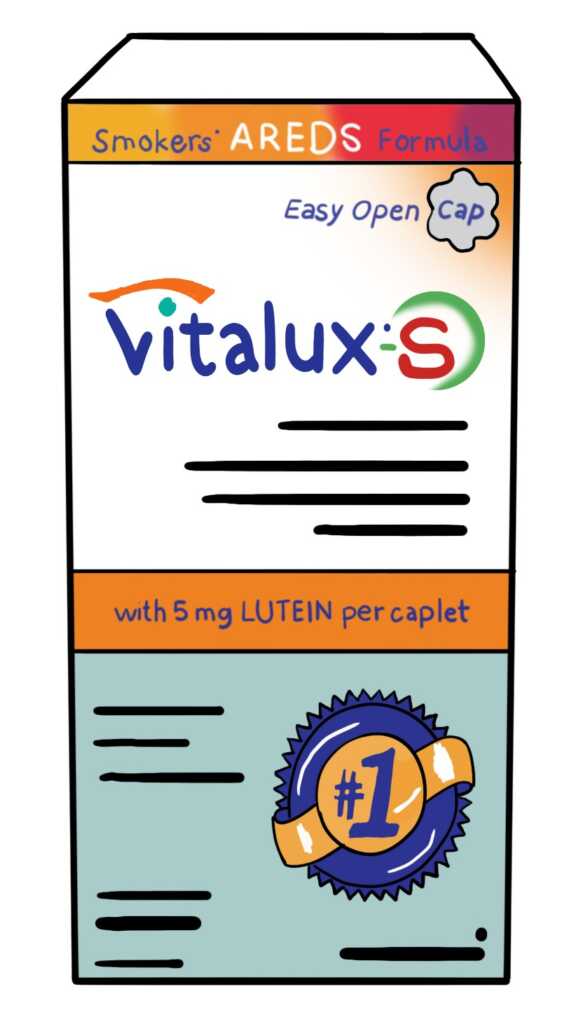
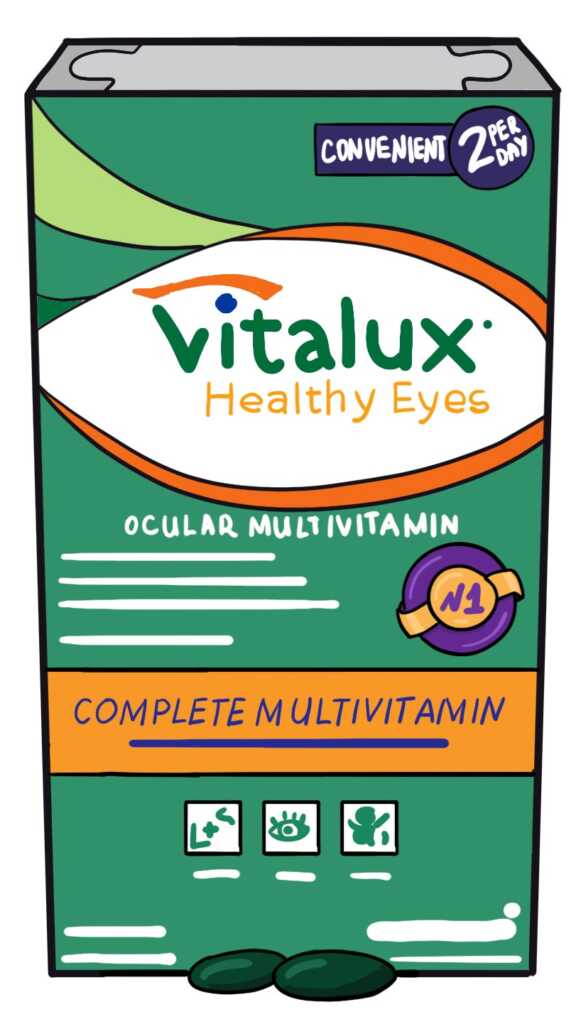
Authors:
Sheldon Chow, B.Sc.Pharm (candidate)
Faculty of Pharmacy & Pharmaceutical Sciences
University of Alberta
Edmonton, AB
sheldon3@ualberta.ca
Corresponding Author(s):
Cheryl A. Sadowski, B.Sc.Pharm, Pharm.D., FCSHP
Associate Professor
Faculty of Pharmacy & Pharmaceutical Sciences
University of Alberta
Edmonton, AB
cherylas@ualberta.ca
Aliya Kassamali, B.Sc.Pharm, PharmD
Edited and Reviewed by The Health Aisle Team
Last Updated: July 14, 2019
References
1. Canadian National Institute for the Blind. Blindness in Canada. Retrieved from: https://cnib.ca/en/sight-loss-info/blindness/blindness-canada?region=on
2. National Eye Institute. (Nov 2018). Facts About Age-Related Macular Degeneration. https://nei.nih.gov/health/maculardegen/armd_facts
3. MedSask. (2013). Age-Related Macular Degeneration and Supplements. Retrieved from https://medsask.usask.ca/documents/newsletters/30.3%20AMD%20supplements
4. Singh, Niharika MS*; Srinivasan, Sangeetha PhD*; Muralidharan, Vinata MS et al. (2017). Prevention of Age-Related Macular Degeneration. The Asia-Pacific Journal of Ophthalmology, 6(6) 520-526. doi: 10.22608/APO.2017416
5. Canadian National Institute for the Blind. Age-Related Macular Degeneration. Retrieved from: https://cnib.ca/en/sight-loss-info/your-eyes/eye-diseases/age-related-macular-degeneration?region=on
6. Canadian National Institute for the Blind. Age-Related Macular Degeneration. Retrieved from: https://cnib.ca/en/sight-loss-info/your-eyes/eye-diseases/age-related-macular-degeneration?region=on
7. Age-Related Eye Disease Study Research Group. A randomized, placebo-controlled, clinical trial of high-dose supplementation with vitamins C and E, beta carotene, and zinc for age-related macular degeneration and vision loss: AREDS report no. 8. Arch Ophthalmol. 2001;119:1417-1436
8. Chew EY, Clemons TE, SanGiovanni JP, et al. Lutein + zeaxanthin and omega-3 fatty acids for age-related macular degeneration: the Age Related Eye Disease Study 2 (AREDS2) randomized clinical trial. JAMA Ophthalmol. 2013;309:2005-2015.
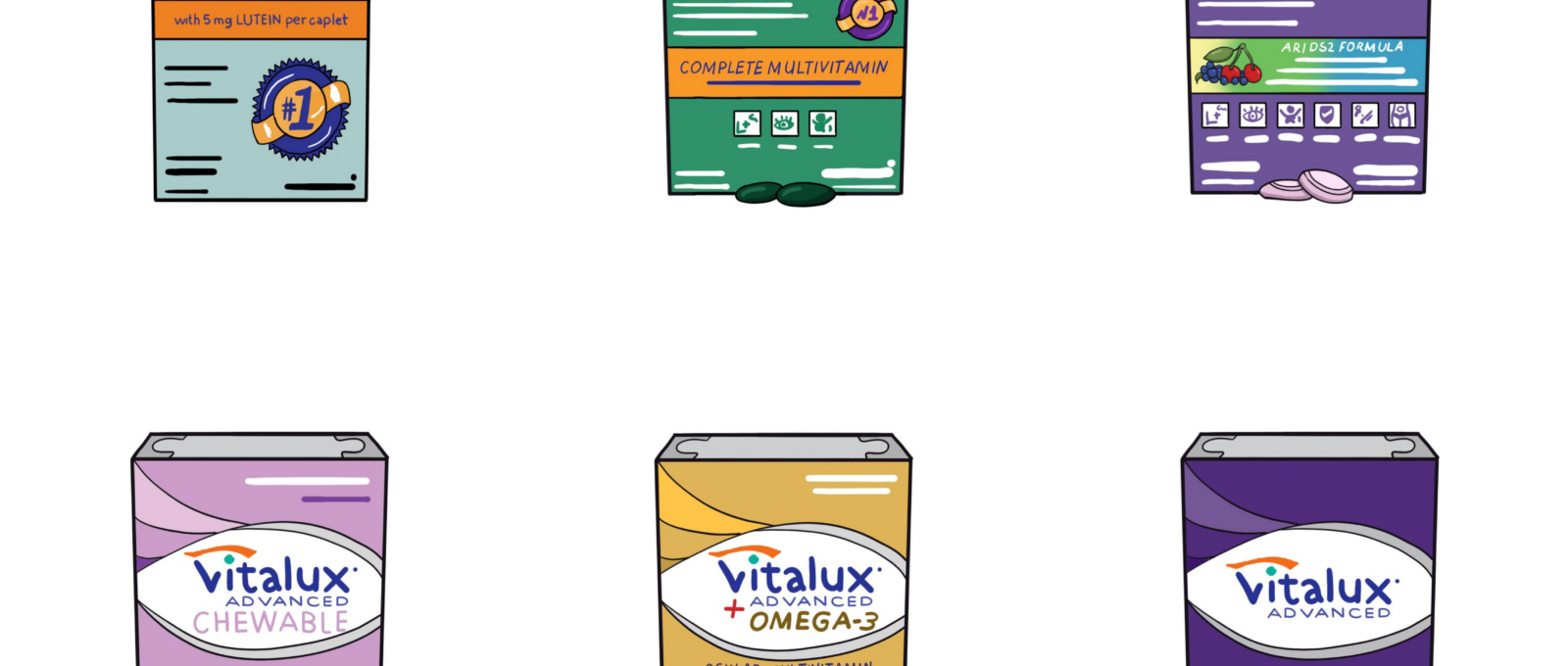
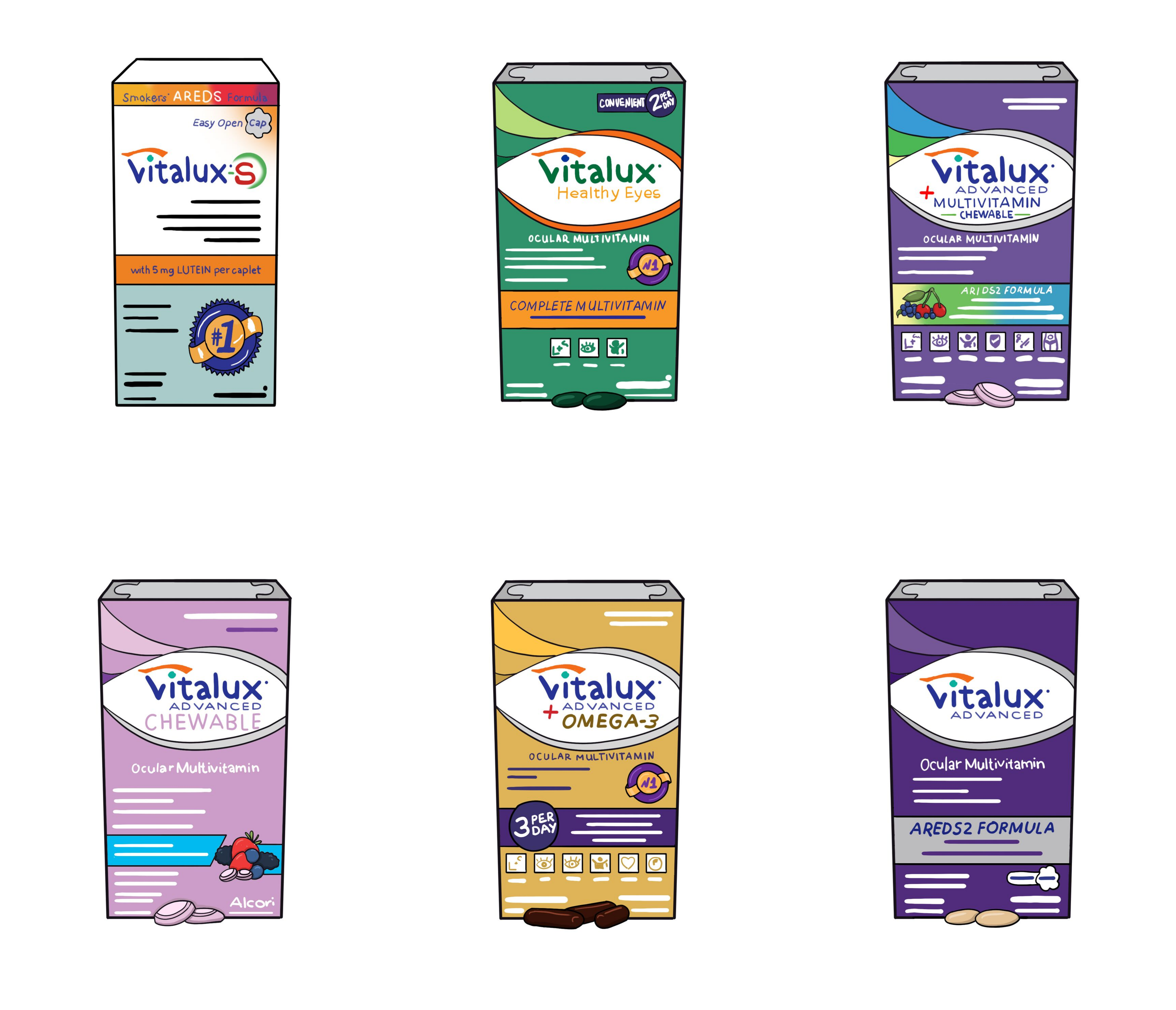
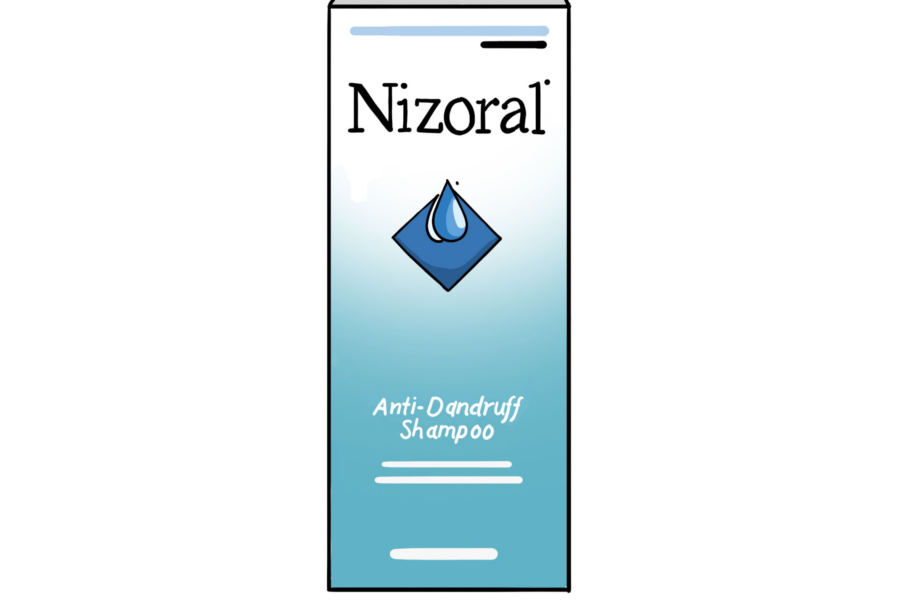

Leave a Comment